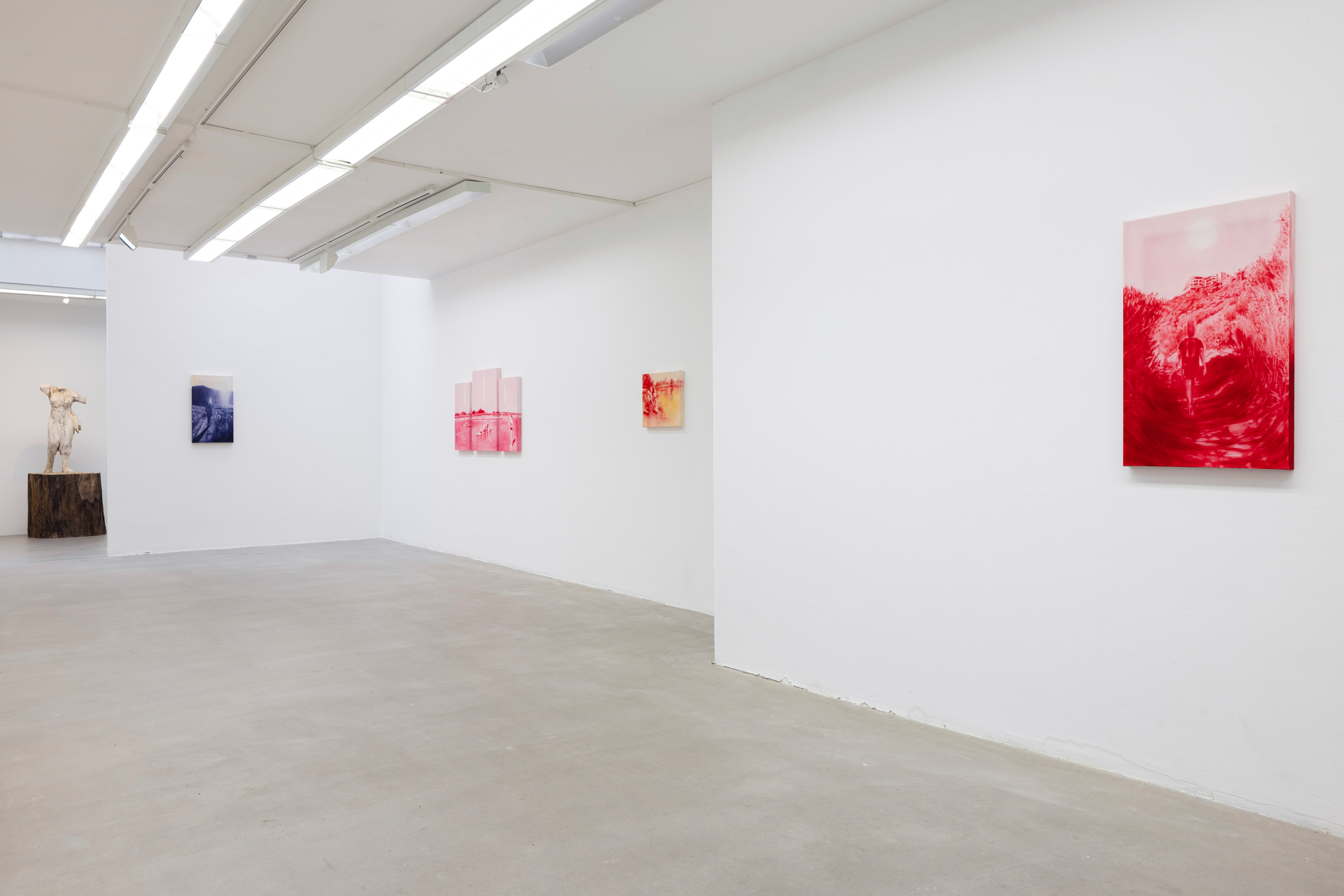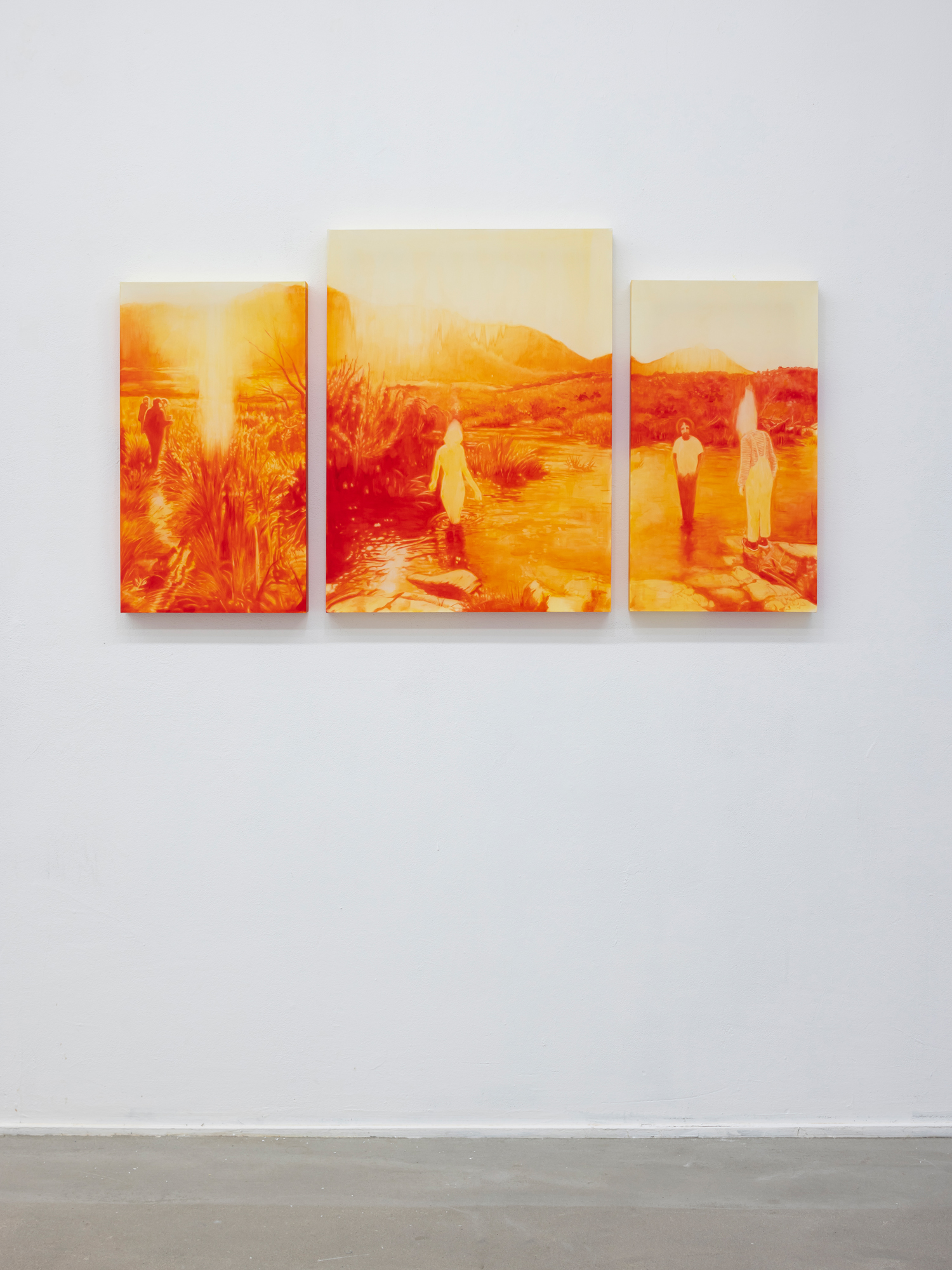Amid the Alien Corn
05 November - 21 December 2024
AKINCI Gallery
Amsterdam
Amsterdam
The idea for this exhibition began with a sense of displacement. Earlier this year, Ruby
Swinney moved to London. The relocation caused a profound rupture in the artist’s life. The
paintings in this show were painted, prior to the move, in the bright, natural light of the
artist’s Cape Town studio. The landscapes they represent are specific to this world, which
now exists only in her memory.
The title, Amid The Alien Corn, is taken from John Keats’ ‘Ode to a Nightingale’. In the poem,
the nightingale is a strange contradictory presence, both innocent and associated with
death. Keats in a flight of fancy, imagines the bird’s other-worldly song heard by the Biblical
character of Ruth, the lonely Moabite woman displaced from home in a foreign land. It is
from this sympathetic depiction of Ruth that Swinney derives the title of this show.
As with the nightingale’s ‘plaintive anthem’, so one is led through Swinney’s paintings by an uncanny music: each picture is a pastoral, affective melodic painting. But like Keats’ poem, this always relapses on reality. Swinney holds the tension between pastoral idyllic and social realism by placing, for example, the rise of a brutalist structure on the horizon, which reduces a tranquil landscape to something both familiar and strange, beautiful and ominous. KneeDeep Palmiet (2023), named after a river in the Western Cape, depicts the indigenous and familiar, as something so alien overburdened by their own fields of colour. In Untitled (Proteas) (2023) a solitary figure is rendered a silhouette by a sunrise or sunset. He is alone, walking a path surrounded by a field of fynbos (vegetation indigenous to the Western Cape of South Africa) towards a bank of shadow: a forest or a hill where a cataract of light hangs suspended. The figure, too, has about his head a white spirit-like flame. There is something ineffectual, even frustrating about the ghostly characters who so passively inhabit these eyeless landscapes. They are like the characters in a Kazuo Ishiguro novel, who seem to have lost their agency to greater, irresistible forces: of history, of economics, of power. And it is in this frustration one feels – in this tension – that one finds not only oneself, but finds all of humanity, finds the imprint of the soul, finds that ‘selfsame song that found a path / Through the sad heart of Ruth’; It is here that we find ourselves amid the alien corn.
As with the nightingale’s ‘plaintive anthem’, so one is led through Swinney’s paintings by an uncanny music: each picture is a pastoral, affective melodic painting. But like Keats’ poem, this always relapses on reality. Swinney holds the tension between pastoral idyllic and social realism by placing, for example, the rise of a brutalist structure on the horizon, which reduces a tranquil landscape to something both familiar and strange, beautiful and ominous. KneeDeep Palmiet (2023), named after a river in the Western Cape, depicts the indigenous and familiar, as something so alien overburdened by their own fields of colour. In Untitled (Proteas) (2023) a solitary figure is rendered a silhouette by a sunrise or sunset. He is alone, walking a path surrounded by a field of fynbos (vegetation indigenous to the Western Cape of South Africa) towards a bank of shadow: a forest or a hill where a cataract of light hangs suspended. The figure, too, has about his head a white spirit-like flame. There is something ineffectual, even frustrating about the ghostly characters who so passively inhabit these eyeless landscapes. They are like the characters in a Kazuo Ishiguro novel, who seem to have lost their agency to greater, irresistible forces: of history, of economics, of power. And it is in this frustration one feels – in this tension – that one finds not only oneself, but finds all of humanity, finds the imprint of the soul, finds that ‘selfsame song that found a path / Through the sad heart of Ruth’; It is here that we find ourselves amid the alien corn.
Text by Noah Lee Swann



 Fisherboys, 2024, Oil on silk, 40 X 60 x 4.5cm
Fisherboys, 2024, Oil on silk, 40 X 60 x 4.5cm
 Soft Water, 2023. Oil on silk, 80 x 151 x 5 cm.
Soft Water, 2023. Oil on silk, 80 x 151 x 5 cm. Untitled (Proteas), 2023. Oil on silk, 40 x 60 x 4,5cm
Untitled (Proteas), 2023. Oil on silk, 40 x 60 x 4,5cm Flame, 2023. Oil on silk, 50 x 80 x 4,5cm
Flame, 2023. Oil on silk, 50 x 80 x 4,5cm
Lost, 2023. Oil on silk, 60 x 80 x 4,5cm

Ankle-Deep Palmiet, 2023. Oil on silk, 80 x 146 x 5 cm.
Photography by Peter Tjhuis